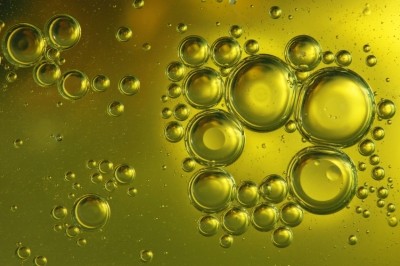Palm oil blend may have uses for margarine fats: Study
The research, published in the Journal of Food Science, suggests new insight into the chemical composition and crystallization regime of palm oil and oil-based products produced by blending or emulsification. The authors said that such information is important for defining the uses of such products in food products such as margarine, shortening, and butter.
The profile of palm oil makes it a natural contender to replace hydrogenated fats in solid-fat food formulations – where it has been suggested that the use of palm oil could virtually eliminate trans- fatty acid content.
Palm oils
According to the authors, the ability of palm oil to crystallize has made it an attractive option for the production of trans-fat free margarine.
They added that palm stearin expresses similar crystallization behaviour and is considered one of the best substitutes of hydrogenated oils due to its capability to impart the required level of plasticity and body to the finished product.
However, palm stearin can not be used directly for edible purposes because it exhibits incomplete melting at body temperature, due to the high-melting point of its triacylglycerols. Generally, palm stearin is blended with palm oil to produce a blend with a melting point below body temperature (37 °C).
Previous studies have focused on the thermal behaviour of edible oils and blends of oils and fats. Whilst the crystallization of oils and fats are well documented, the authors noted that there is limited information regarding the mechanisms related to crystallization and emulsification.
Experimental margarine fats, formulated with palm oil and palm stearin in different ratios were subjected to an emulsification process and analysed for total triacylglycerols, solid fat content, and thermal behaviour. In addition, the microstructure properties, including size and number of crystals, were determined for experimental margarine fat and commercial margarine fats.
Study details
The researchers observed that blending and emulsification at palm stearin levels over 40 per cent significantly changed the physicochemical and microstructure properties of experimental margarine fat – as compared to commercial margarine fats.
They reported that the blend resulted in a “desirable” dipalmitoyl-oleoyl-glycerol content of less than 36.1 per cent solid fat content at 37 °C.
“The development of primary crystals within palm oil -based margarine fat was dominated by high-melting triacylglycerols … whilst the addition of a small dose of monoacylglycerol delayed the emergence of undesirable changes in the margarine fats,” said the researchers.
Triacylglycerol composition, solid fat content, thermal behaviour, and microstructure properties of palm oil-based margarine fats were significantly affected by blending and emulsification, said the authors.
However, they noted that incorporation of palm stearin at less than 40 per cent in the presence of a dose of monoacylglycerol as emulsifier expressed complete melting at body temperature, adding that as such the blend should result in “excellent mouth feel.”
In contrast, the addition of palm stearin at more than 40 per cent caused a grainy texture in the mouth, which in turn exhibited incomplete melting at body temperature.
Source: Journal of Food Science
Published online ahead of print, doi: 10.1111/j.1750-3841.2010.01922.x
“Effect of Blending and Emulsification on Thermal Behavior, Solid Fat Content, and Microstructure Properties of Palm Oil-Based Margarine Fats”
Authors: S. Saadi, A.A. Ariffin, H.M. Ghazali, M.S. Miskandar, S.M. Abdulkarim, H.C. Boo

















